Content syndication is an effective way to get your blog posts in front of new audiences and increase your online visibility. But with so much content out there, it can be tough to stand out and attract readers to your blog.
That’s where content syndication comes in. By sharing your blog posts on other popular industry sites, you can reach a wider audience and drive more traffic to your website. And the best part? It doesn’t cost much to do it.
Content syndication is an effective way to get your blog posts in front of new audiences and increase your online visibility.
These days, promoting your own content marketing efforts, like blog posts, is tough.
There are millions of blog posts published every single day online.
It’s harder than ever before to get your target market to read a post. Even if your content is the best of the best.
Simply sharing your content on social media won’t bring in enough new visitors to move the needle.
Sure, having a social promotion strategy is great. But it’s still tough to get noticed by new eyes.
But that doesn’t mean it’s impossible. With content syndication, you can get your blog posts featured on some of the best sites in your industry.
And the upside? It costs almost nothing to do it.
With so many blog posts and so many readers, it’s not unreasonable to think that you’re missing a big chunk of people who are likely interested in your content.
Content syndication for your blog posts is cheaper than rewriting content for a guest post.
Plus, you don’t have put in the labor and time it takes to write one. You’ve already done it.
In fact, Best Self used content syndication to take their content marketing game plan to the next level and grow to $5 – $10 million in revenue.
They took their content marketing game plan to the next level by incorporating content syndication on popular industry sites.
Here’s how they did it and how you can implement their strategy today.
How Best Self Exploded with content syndication
Best Self was founded by Cathryn Lavery and Allen Brouwer, who won Shopify’s Build a Business VI competition.

They launched their business with a single product that took off like a rocket, allowing them to create more products and build a brand that’s recognized all over the entrepreneurship industry.
Their famous product, the Self Journal, is a revolutionary new way to organize and plan your day for success:



With thousands of positive reviews on their Self Journal product, they knew they had a cash cow.
Their brand and products were built out of the need to get more work done in less time and feel happy and accomplished about the work they did.
Too often they’d feel unclear at the end of each day about how well they performed. If they really accomplished all the tasks they needed to.
They developed this pain point into a product that’s loved by countless consumers. And they’ve both been featured on massive publications like Inc, Business Insider, and more.
Through amazing content marketing and blog posts, combined with content syndication, they’ve been able to write amazing productivity articles for major publications.
So, what exactly is content syndication?
Content syndication is a method of republishing (or repurposing) content on other related industry sites in order to reach a larger audience. Syndicated content also helps increase brand awareness to new audiences, build links, and drive traffic back to your site.
Essentially, content syndication works to reach an audience that you might not have been able to reach by tapping into new outlets.
Best Self chose content syndication as a part of their strategy with content marketing because it allowed them to get featured by audiences they couldn’t normally get.
Their entire target market was reading big sites like Inc and Huffington Post, not the Best Self blog.
But their mission was to change that. To capture those visitors and turn them into Best Self blog readers.
Creating lead magnets and content upgrades, they were able to drive over 1,800 email signups to their newsletter in just a few weeks.
Now they get 186,000 new visitors from their syndicated content to their site every single month.
They’ve leveraged that traffic into over $5 – $10 million in revenue.
Here’s how to implement their strategy for blogging and syndication to turn new traffic into sales.

Content Syndication Advantages
Blogging is great on its own. But it’s hard to reach more users than your current active readers. Some advantages of content syndication are:
- Increased Reach: Content syndication allows you to reach a wider audience beyond your current readership. By publishing your content on other high-traffic websites or platforms, you can expose your brand and message to new audiences and potential customers.
- Improved SEO: When you syndicate your content, you can also include backlinks to your website. This not only increases referral traffic but also improves your search engine rankings, as search engines value backlinks from authoritative websites.
- Cost-effective: Content syndication can be a cost-effective way to promote your brand and drive traffic to your website. Instead of investing in paid advertising, you can leverage the audience and reach of other websites to gain exposure.
- Builds Brand Authority: By creating high-quality content and syndicating it on authoritative websites, you can establish your brand as an expert in your industry. This can help build trust with potential customers and improve your overall brand authority.
- Increased Leads: By syndicating your content on third-party platforms, you can generate new leads and drive more traffic to your website. This can help increase conversions and ultimately lead to more sales for your business.
Content syndication can help you take it to the next level. But you also need to be producing some of the best content in the game.
Here’s how to do both and combine them for traffic that leads to sales.
Writing Terrific Content
Blogging is one of the best ways to bring in tons of new traffic and build a reputable brand in your space.
With millions of blog posts being published daily, that puts a major problem in place:
.png?width=1536&name=Copy%20of%20Comparison%20Chart%20Template%20--%20Blog%20Team%20(2).png)
Too much competition.
But there are ways to write some of the best blog posts in your niche and stand out from the rest.
According to recent studies, companies that post over 16 blog posts each month will get more traffic to their site:



Not only does blogging more often lead to more indexed pages and more traffic, it also generates more leads:



The more total blog posts you have published on your site, the more indexed pages you’ll have. The more indexed pages, the more chances you have to bring in traffic from organic search or be linked back to another site.



But not just any content is going to get syndicated on popular sites or shared by others in your industry.
An Orbit Media study looked at the average length of blog posts and found that the standard length is just over 1,000 words:
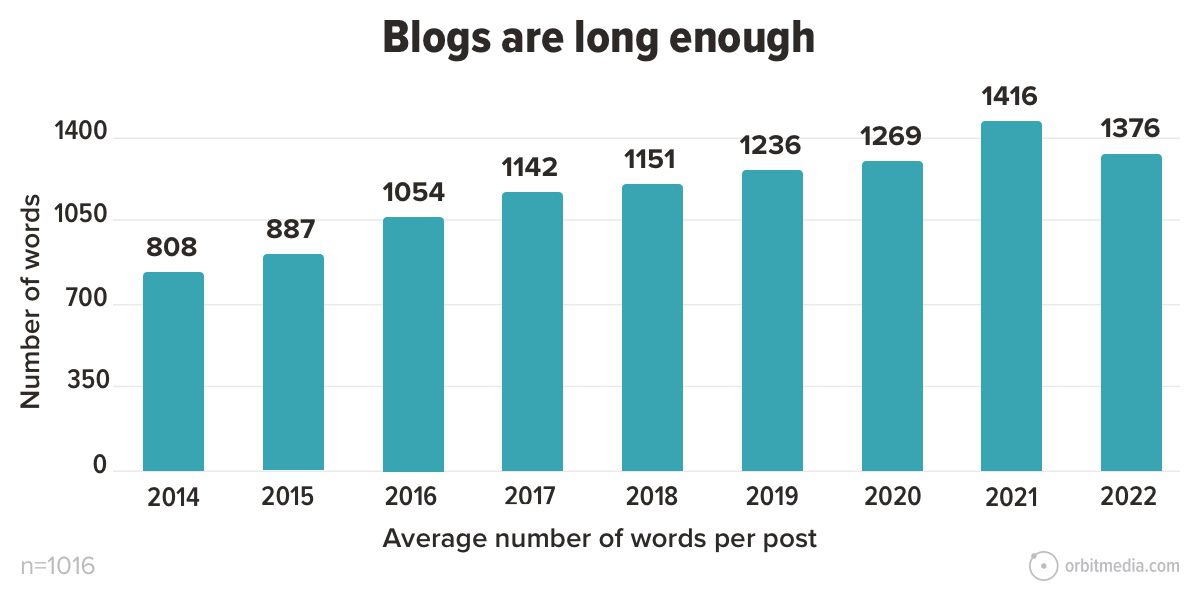
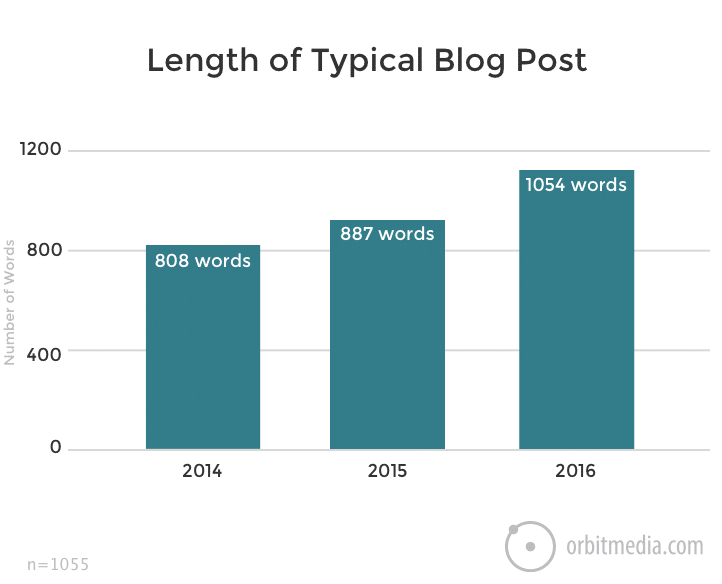

According to a recent study, typical content isn’t long or good enough. 1,000 words may be average, but it isn’t the highest-performing content. They found that the top-ranking content is longer in word count than the average blog post.
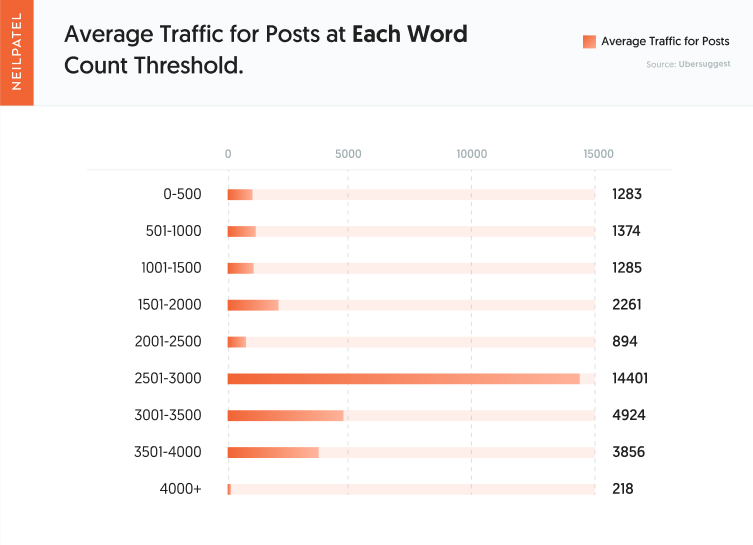
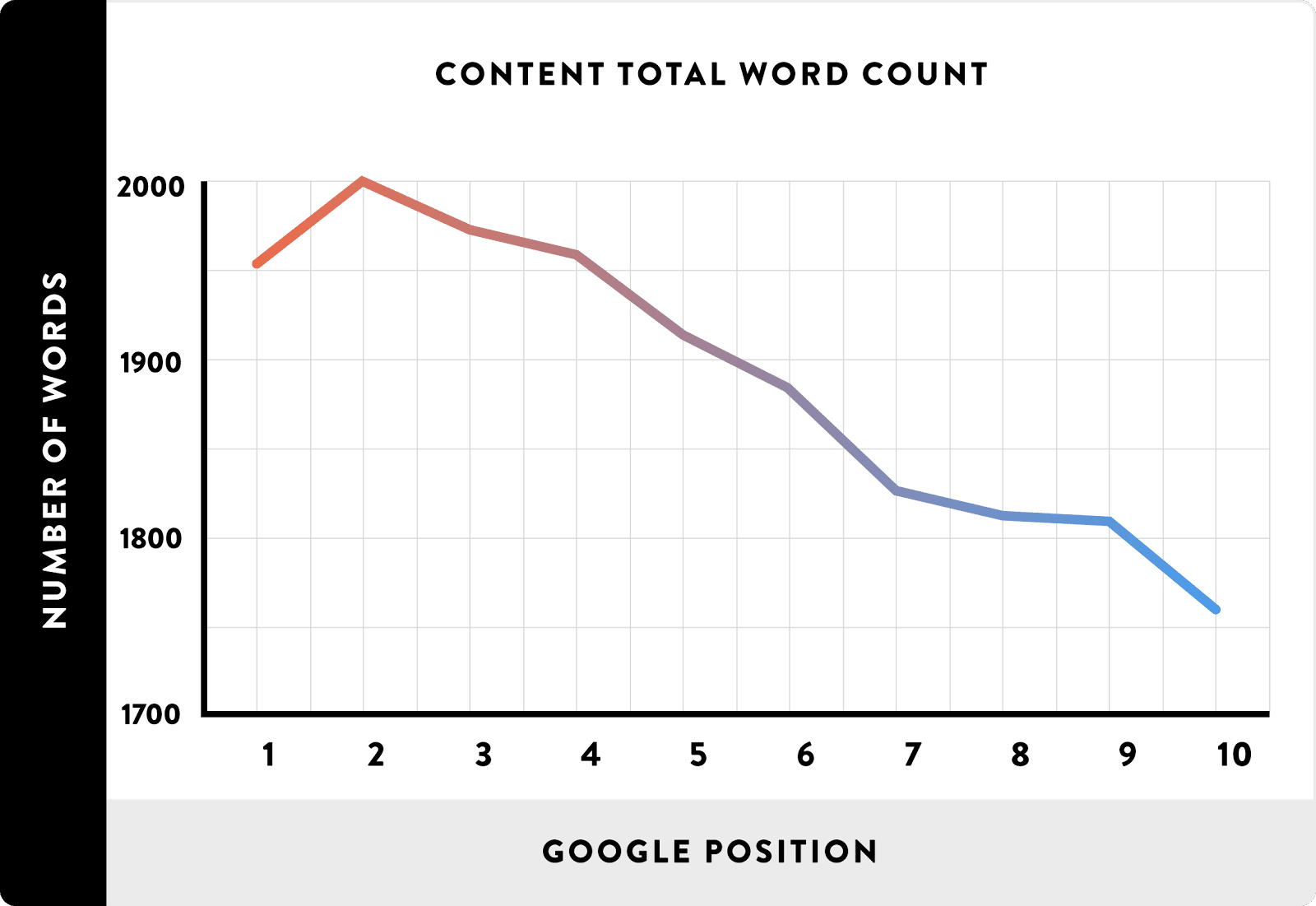

This gap in top-ranking content vs. standard content is a perfect opportunity for you to capitalize on traffic.
Posts that were 2501-3000 words generated by far the most traffic.
One of the best ways to create evergreen content in your industry is to research the best content from top competitors.
Using a tool like BuzzSumo, you can plug in your competitor’s website and see what their top shared posts are:
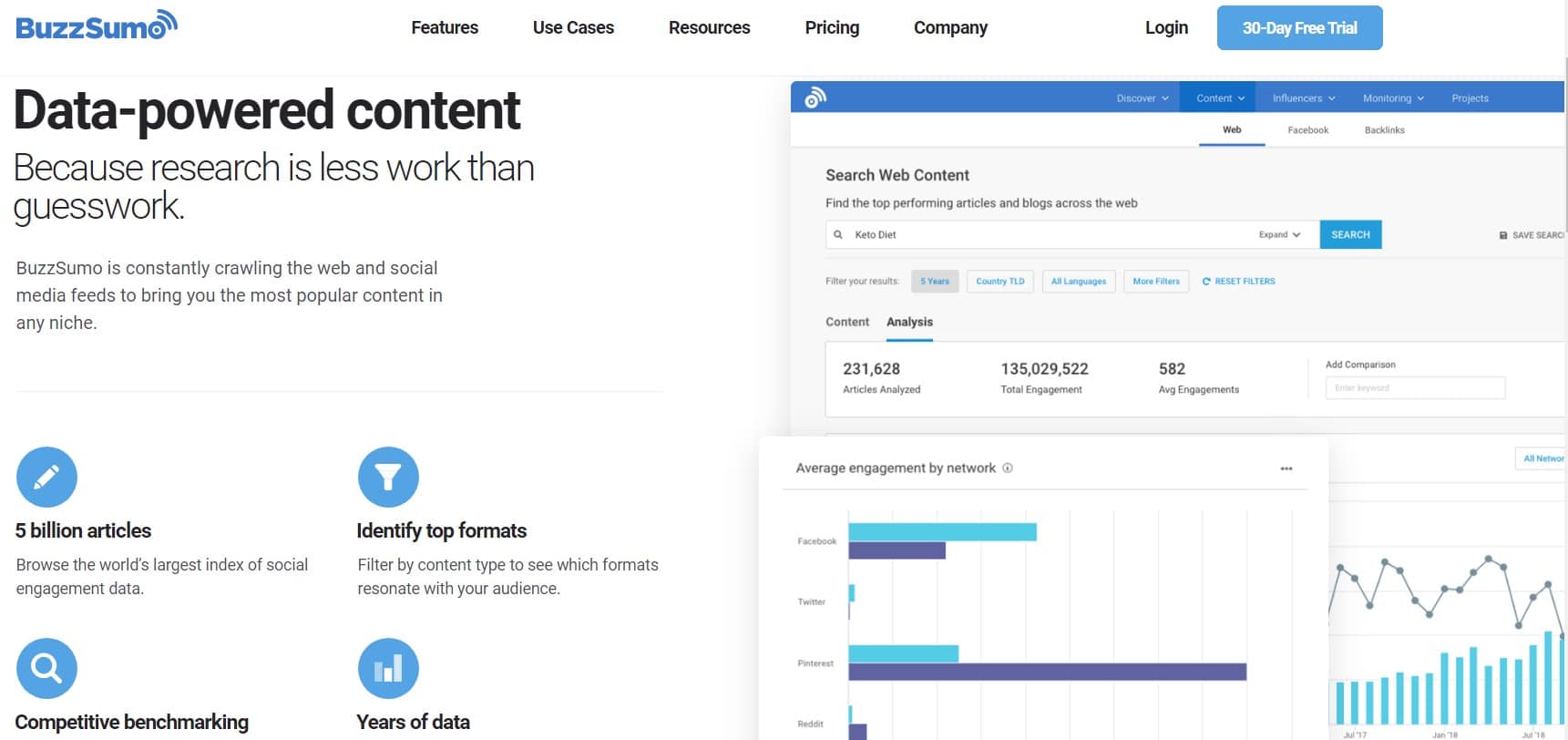




Click on those posts and try to replicate their strategy. Everything from word count to structure and the overall goal of the post.
Creating amazing blog content is the first step in any great syndication strategy. Best Self was only able to get their content featured on Inc and Business Insider because it was the best of the best.
Be sure to follow the best practices of length, frequency, and structure for your industry to set yourself up for success.
Content Syndication Strategy
Step 1. Apply to guest post on target sites by repurposing content.
Creating a content syndication strategy isn’t easy. But the payoffs can be huge. As you saw with Best Self, they had to put in hours of work and dedication.
All of that work has led to them driving millions in sales every single year.
And it all started with one tactic: guest blogging.
Guest blogging is great for building brand awareness and driving traffic to your site. But it’s not scalable like syndication.
It takes a massive investment of time and effort because you’re generally writing articles from scratch that haven’t been written on your site or another’s before.
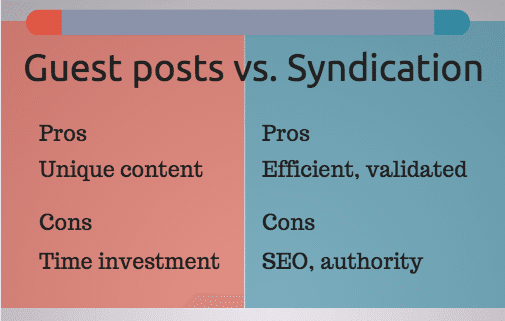


Content syndication on the other hand simply takes existing, proven content and reposts it on authoritative sites.
But that’s also the kicker:
It takes time and effort to build up your brand to a level that allows for syndication. You need to get your foot in the door first by providing massive value to other sites.
You can’t simply ask to get syndicated when another site hasn’t interacted with you or heard of you before.
That’s a recipe for a 0% response rate.
The key is to take a methodical approach by starting to guest post. This will help you establish relationships and share your content to new audiences, building yourself up to the point of easy syndication.
To find blogs in your niche that accept guest posts, simply search on Google with the following parameters:



You can use any of the following search queries to pull up results:
- Write for us
- Blog guidelines
- Contribute
- Guest post
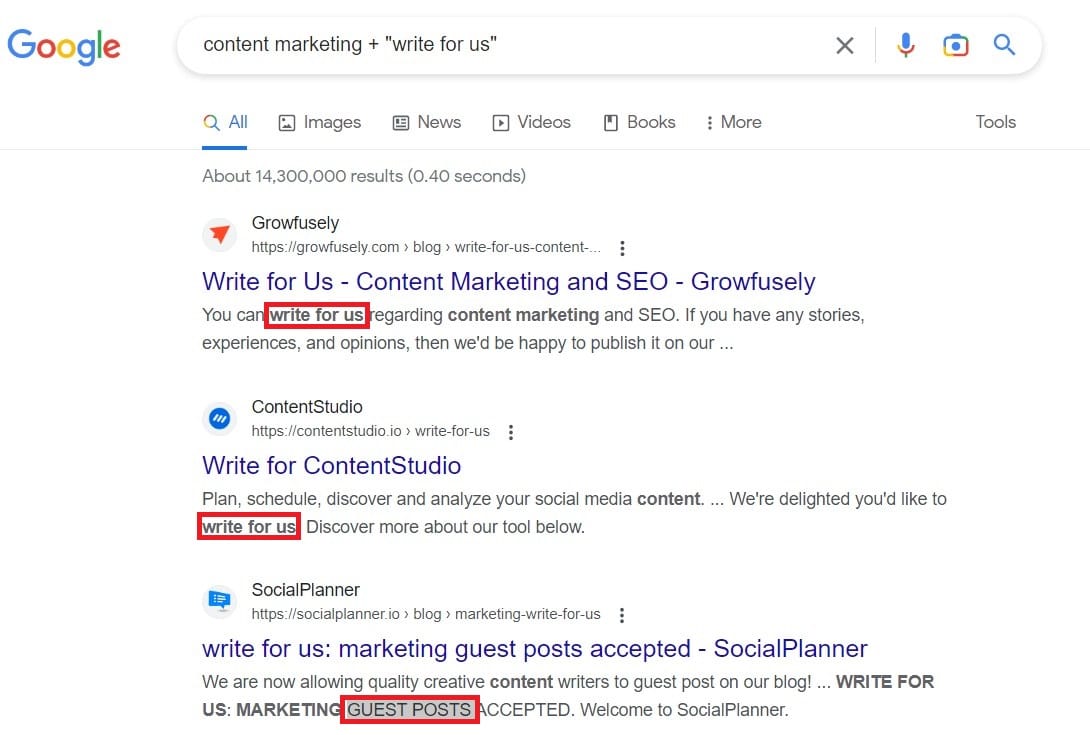
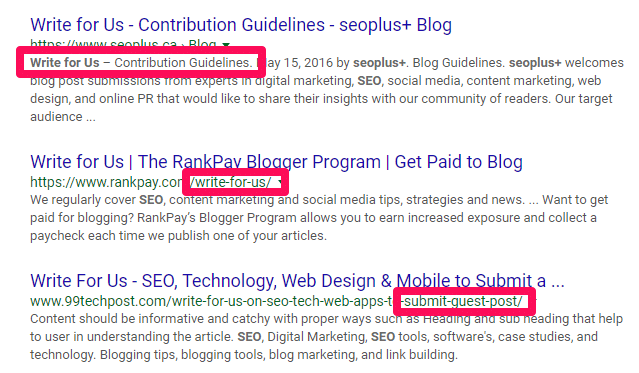

Most of these sites will allow you to apply directly on-site by sharing posts you’ve written and information about your business. It’s that simple.
Once you’ve created a target list of sites and applied to them, it’s time to repurpose existing content.
Your blog should already be plentiful before conducting a guest post and syndication strategy. Traffic will be driven to your site from syndication and guest blogging, and you need blog posts on your own site to keep people around and coming back.
One major trick here is to simply repurpose your content instead of writing brand new content that can take days or weeks to develop.
Content repurposing is a proven way to cut down on time spent producing content while still delivering quality articles.
To repurpose content fast, all you have to do is shift the “angle” of your piece.
An angle is much different than a topic. The topic is the general idea that you’re writing about, whereas the angle focuses on what side you’re playing. How do you convey that topic in the eyes of readers?
Let me give you an example:
Topic: Blogging mistakes
Angle: making these mistakes is killing your traffic
Shifting the angle can transform your piece into an almost unrecognizable entity while still using the same information.
For example, you could shift that angle above to:
Blogging mistakes are hindering your credibility/topic authority.
That’s an entirely different angle with no similarity to mistakes and traffic. But the content is going to be exactly the same. All that changes is your angle and how users apply that information!
You can simply copy the entire post you wrote earlier and comb through it to change the angle and intro.
Soon, you’ll have an almost unrecognizable post that took you significantly less time than writing a guest post from scratch.
Now, let’s move on to step two.
Step 2. Use BuzzSumo to analyze your best posts from guest blogging.
Once you have applied successfully to guest posting sites and submitted your repurposed content, you can locate your top-performing posts to pitch to other sites.
Using BuzzSumo, you can generate a report of your top shared posts on the sites you’ve guest posted on.
The key here is to take posts from a site and pitch them as syndicated content to another site where that article wasn’t posted.
For example, if your guest post target list had five sites, and your latest post about motivation was only posted on site one, you can pitch that to site two as syndicated content.
Using BuzzSumo, you can leverage your top-performing posts as social proof and brand recognition.
Head to BuzzSumo and paste in the links of your latest blog posts to see what traffic and shares they’ve generated:



Add each post to a new spreadsheet or list of posts that have gotten shares and traffic.
The more you guest post for sites, the easier it will be to pitch syndicated content in the next step.
Keep adding to your list until you have multiple posts that you can pitch.
Buffer uses this strategy in their own syndication efforts, which has landed them major outlets like Forbes.
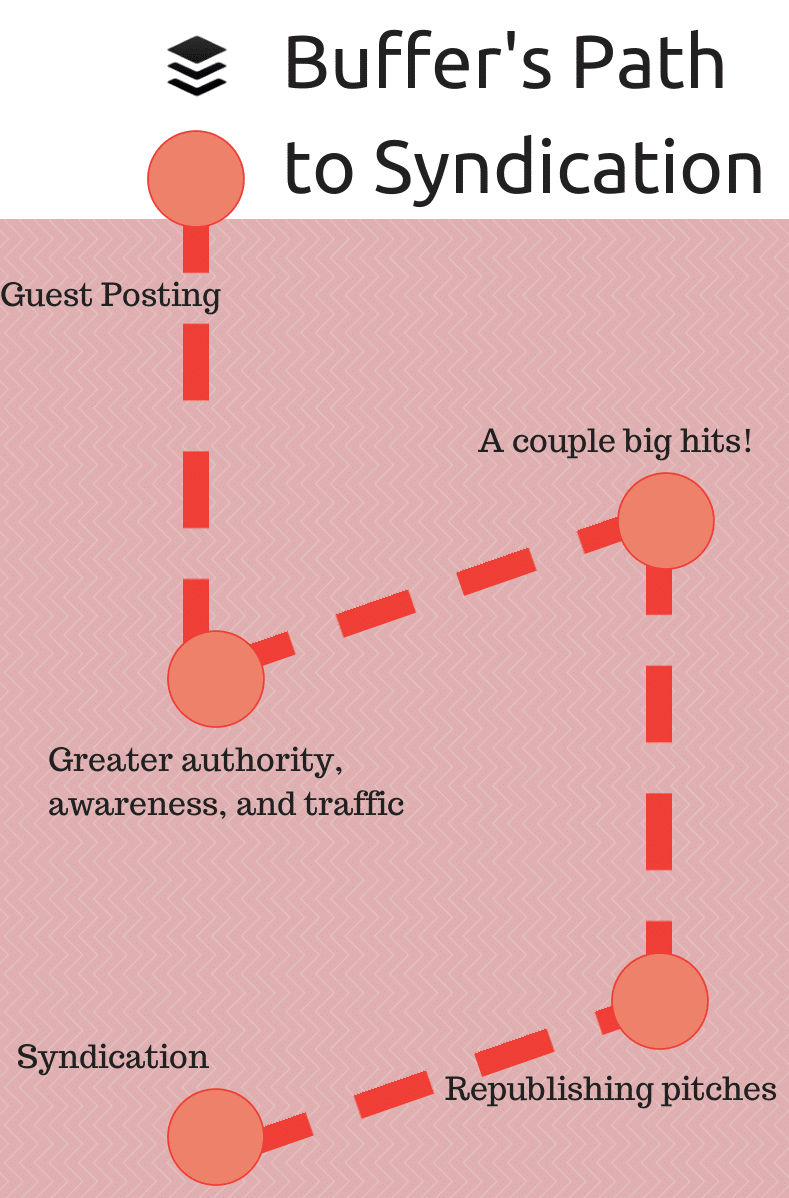


Step 3. Pitch syndicated content from your best posts with this template.
Now that you’ve guest posted for top tier sites using content repurposing and compiled a list of your most successful guest posts, it’s time to pitch them to different outlets as syndicated content.
You’ve already done most of the work, and you deserve a pat on the back for coming this far.
All you have left to do is close the final deal.
Since you have contacts at your guest blogging sites, it will be relatively easy to craft a template that you can use to pitch syndicated content.
We’ve created a brand new template for you, just for this purpose. It includes a few key factors for a great, succinct pitch:
- Praise – you are giving credit and praise to the site you have guest posted for. This is where you show appreciation.
- Summary – giving a brief 1-2 sentence description of the post you’re pitching.
- Social proof – leveraging the social proof of your shares and traffic from BuzzSumo data to add credibility.
Here’s a specially-crafted template for you to use to pitch syndicated content:
Hey [name of contact at blog]!
I’ve been really loving all of the support, feedback and engagement on all of my guest posts on the [their blog name] blog.
People have really engaged with them, and I love providing content to your site.
I’m really excited to share more of my content with your audience. I’d love to start sending you [weekly,monthly,quarterly] lists of the best content from my blog that I believe your audience would love.
For example, here are a few of my top-performing posts as of late that would be a great fit for the blog:
- [recent blog post title] + Case Study: How to Reach $5 – $10 Million Revenue Using Content Syndication
- [recent blog post title] + Case Study: How to Reach $5 – $10 Million Revenue Using Content Syndication
- [recent blog post title] + Case Study: How to Reach $5 – $10 Million Revenue Using Content Syndication
Do any of these seem like a nice fit for the blog? Of course, if you ever have any suggestions, I can always tweak the existing posts.
Looking forward to getting a schedule in place to get these posts shared with your audience.
Best,
[your name]For each blog post that you reference, you can take recent posts from your guest blogging ventures and use those.
That way, you’ll only be syndicating existing posts on your target sites, driving countless amounts of new users back to your site with little to no new effort.
No more rewriting and repurposing.
Best Self has used this strategy to grow their blog to nearly 200,000 monthly visitors. They are now doing over $5 – $10 million in revenue every year.
Recap: TL;DR
Sometimes, simply sharing your content with a promotion strategy isn’t enough.
Not if you want to grow your business by reaching new audiences at a low cost.
Content syndication allows you to re-post your already written content on other popular sites in your industry.
Meaning you can reach tons of new users who will love your content without spending a dime.
But not just any content can be syndicated, let alone accepted by publications.
Be sure to follow the best practices of content marketing:
Make sure that you post long-form content 16+ times every month. This will help you get more traffic and analyze what posts are performing best.
Lastly, it’s time to develop a content syndication strategy. That involves researching sites and guest posting content on their site. You can easily repurpose your own blog content by developing new angles.
Use that content to develop a relationship with the site. Then, move in the for kill by pitching a popular syndicated post using our free template.
Soon enough, you’ll be driving more traffic and brand awareness with as little work as possible.
Now it’s your turn
Content syndication can help you get your already written content on top tier sites in your niche. Take advantage of this powerful tool for your content strategy by following the tips in this post.
What are your favorite ways to syndicate content? Do you syndicate content on your own blog?

Comments